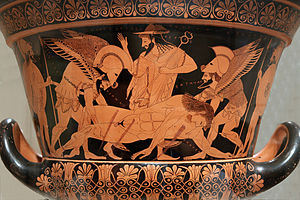In 1949 three brothers in Panagyurishte, a small Bulgarian town southeast of the capital Sofia, came across a number of artefacts whilst digging for clay. In total the nine objects weighed in at just over 6kg. They were made of 24-karat gold, though their worth cannot be measured on this alone. The Panagyurishte treasure, as it became known, was announced as a major discovery. The objects were dated to 4/3rd centuries BC and came from a time before Bulgaria, when the lands were known by a different name, Thrace.
Thrace.
Borders in antiquity were not as clearly defined as they are today (often geographical features were used). Thrace, as per the map below ranged across southeast Europe and its people had a somewhat unsavoury reputation amongst the ancient Greeks.
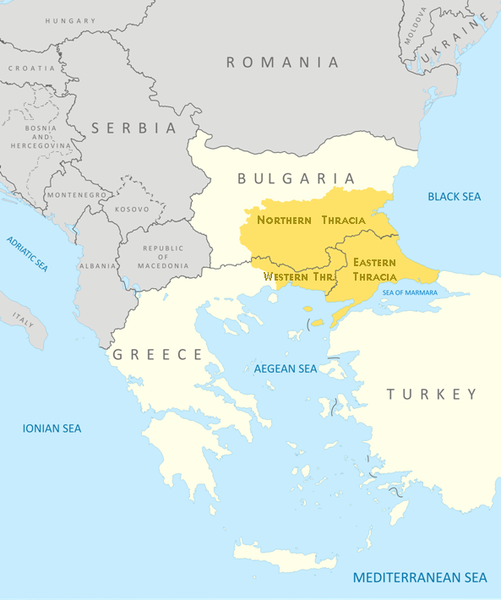
Herodotus made a brief assessment of them in his Histories (5.3.1) here he commends them on their supposed invinvcibility and strength, and number. However, this could only be realised were they to be united by a sole ruler and as this was never going to happen the Thracians would remain weak. Separate from this, but echoing this theme was an account given by Thucydides (2.95ff, 4.101) where a supposed ally of Athens was a Thracian king. I write ‘supposed’ because nothing came of this in terms of military assistance and the king was eventually killed in a battle with another Thracian tribe. By the time of Aristophanes the Thracians were mocked for how they spoke Greek (see Bravo).
The Panagyurishte treasure.
The 9 items consist of a phiale (shallow bowl), amphora, three oinochoai (wine jugs) and four rhytons (drinking vessels).
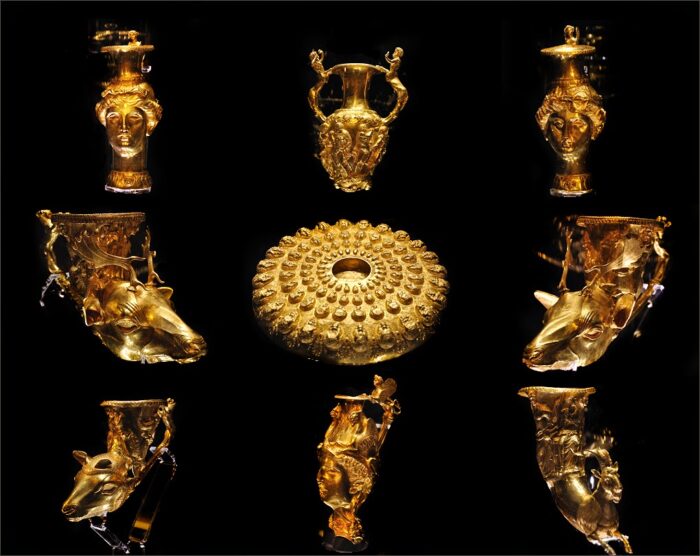
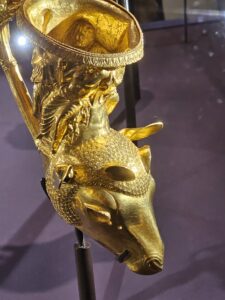
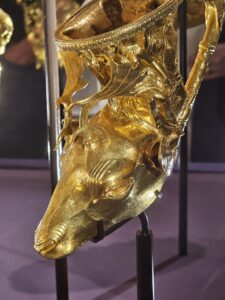
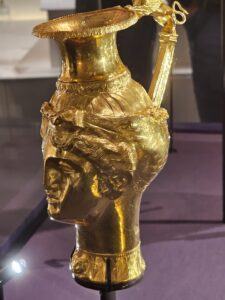
(above) a few of the photos which I took on my recent trip to the Persia to Greece exhibition at the British Museum.
The rhytons in particular are staggeringly beautfiful, gold aside the detail of them indicates a high level of skill. The question then is, who owned them? The main suspect is Seuthes III who ruled between 324-312 BC (though possibly longer). This was a time where Macedonia was still a dominating influence, even though Alexand the Great had died. As to where the objects were crafted, there are competing theories. One posits that it was Thracians themselves, whilst another suggests that the Greek colony of Lampask, in modern day Turkey, was the location.


